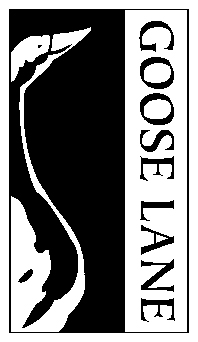Hurricanes and Blaze Island
October — all over, predicts the old mariner’s verse for hurricane season, but as Rebecca Leaman points out in her guide Hurricanes, it is “rather optimistic” (p. 30). Already this year we have run through the list of Atlantic hurricane names — the newly developed Tropical Storm Wilfred pushing us over the edge — and we still have two months left to go.
Though Leaman notes in her guide that only three or four tropical cyclones affect Canada every year and that records show none were Category 3 or higher (p. 32), things are changing; waters are getting warmer. In Catherine Bush’s Blaze Island, an environmentally themed novel, a massive hurricane takes centre stage. Based in a world not unlike our own, we thought we’d dig into Blaze Island’s fictional hurricane with the help of Leaman’s hurricane guide.

Right from the get-go, Blaze Island opens with the hurricane whipping up the eastern seaboard: “For days they’d tracked Hurricane Fernand, Category 5 then 4 then 5 again, winds topping 250 kilometres per hour” (p. 11). An edge-of-your-seat way to kick off a novel, and after reading Leaman’s text, it’s all we need to dig up more info on that monstrous storm. As Leaman explains, “Hurricanes are named from six lists, and the name lists rotate, so each is reused every six years. . . . Hurricanes are named each year in alphabetical order, but the letters Q, U, X, Y, and Z are not included because of the scarcity of names beginning with those letters” (p. 38). With that in mind, Hurricane Fernand must have been the sixth one of the season for Blaze Island, but Fernand does not appear on any of the hurricane naming lists.
Any easy answer would be Fernand was simply a stylistic choice, but perhaps it hints at a history of worsening weather. Leaman notes that hurricane names get retired when a storm is considered too costly or deadly. A new name is then added to the list. Fernand is only the sixth of this season, but who knows how many there were in the seasons before. Noting the devastation caused by Fernand, it too would seem eligible for retirement.

From smashed windows to destroyed buildings, the aftermath of Fernand was tremendous, and communication became difficult. Leaman explains, “Big storms often interrupt Internet access. Be prepared to find information elsewhere in an emergency” (p. 63). As we see in Blaze Island, even with added backups, you cannot rely on the Internet wholeheartedly:
Miranda and her father, Alan, took other precautions as well — including planting trees as wind breakers — but there is more than just wind to worry about during a hurricane. Leaman warns “If you are caught in fast-rising water and your car stalls, abandon it and save yourself and your passengers” (p. 99). A certain character of Bush’s learns this the hard way:
I didn’t know how far —. At last I came to the top of this big hill. By now the wind was trying to push me off the road. At the bottom I saw water, but I could make out the other side in my headlights so I thought I’d gun it, which is stupid — next thing I knew I was in the current. The car struck something and tipped, water started pouring in through the floor. I was trying not to panic. I managed to get the window open before the electrical cut out — (p. 29)
Blaze Island touches on many more aspects of the hurricane, including its effect on people. Reading through Leaman’s text, it sheds some light on the mysterious hurricane that brushed over tiny Blaze Island. Alan and Miranda were clearly prepared for it, but should the rest of us end up in a world like Blaze Island, it may be nice to have a copy of Leaman’s Hurricanes nearby.
Excerpts from Blaze Island Copyright © 2020 by Catherine Bush and Hurricanes Copyright © 2020 by Goose Lane Editions.
